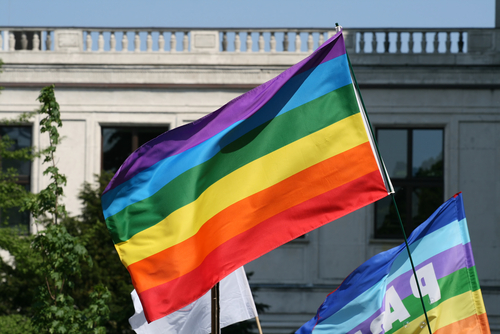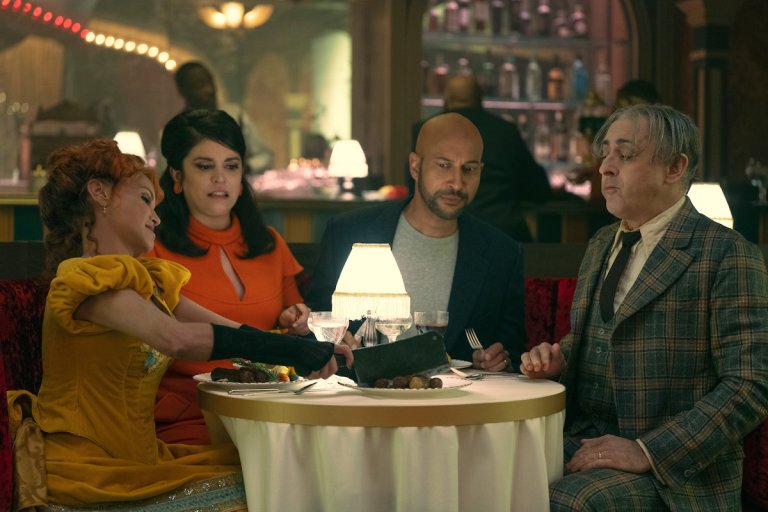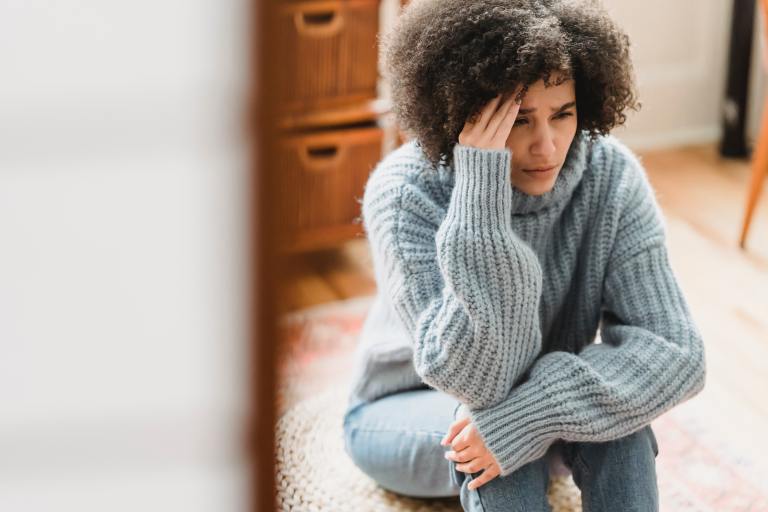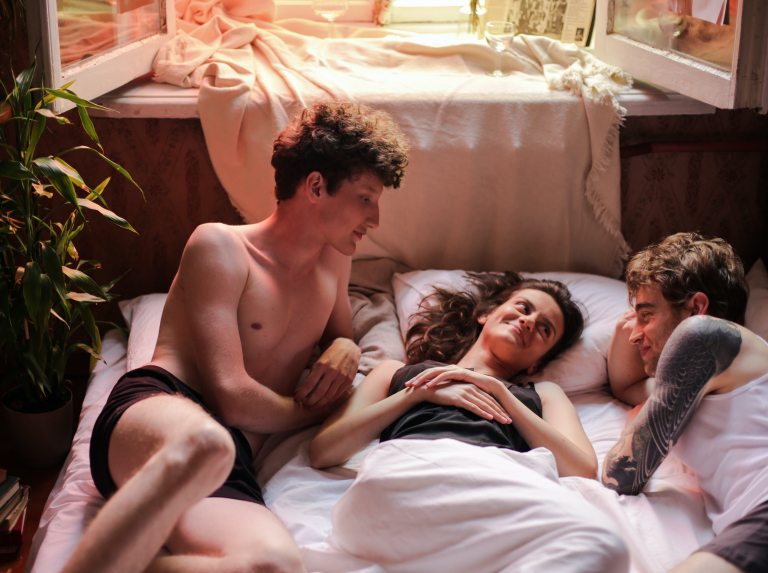Gandhi School Of Hookups
I couldn’t help but wonder if it wasn’t that gay men couldn’t change but didn’t want to change.
By Jaime Woo

THERE ARE A SERIES of firsts with Grindr.
The most common is obviously experiencing the hookup app for the first time. I joined in June of 2009 after learning about it from friends while having drinks on the patio, of course, and I remember the wonder and thrill of having in my hand a world of available, nearby men. It was a heady time for technology, a few years after the tipping point of Twitter and a year before Instagram, and I was intoxicated by a sense of possibility. Could the lofty promise of social media’s ability to connect even spread to mobile cruising?
It’s not that Toronto necessarily needed Grindr. The city is inclusive and safe, steadily more progressive over the past three decades after a bathhouse raid incited the queer community to become more activist-oriented — the Canadian equivalent of Stonewall. At the same time the app was perfectly situated, representing the future of cruising, decentralized from parks and bathhouses, for men able to travel anywhere and everywhere.
There’s the first time an encounter successfully happens, which nearly makes up for the disappointments from the flakes and the missed connections. Even if the sex isn’t that great — and the only ones constantly having great sex are high, lying, or very lucky — there’s the novelty of summoning a man on demand. The intoxicating perfume of having sex literally at your fingertips quickly dispels, but those first few hookups are electric and sometimes endearingly awkward.
Of all the firsts, however, the one I remember best was the reaction to uploading a faceless torso to my profile. I got a reasonable number of messages when my face was in the picture, but it paled to the spike that happened once I went anonymous, the same photo but cropped to end at the hint at my jaw.
Men came out of the woodwork, and it was understandable. A profile without a head sometimes signals a readiness for action, a literal unwillingness for chatter. In addition, messaging a torso has an almost lottery-like allure: Grindr can be read as a game and scoring an anonymous user’s face can act as a minor win. (Getting them in bed, naturally, is the ultimate win.)
I noted how aggressively these users would chat, sharing in detail how hot my photo was, the sex they wanted, and their fervent horniness — all to an anonymous stranger, which I imagine was part of the allure. Inevitably, they would ask for a face picture, and I would comply sending the original version of the photo, head appended. The majority of men would then vanish, either no longer responding or, less ambiguously, blocking me.
On one hand, this busted face can only get me so far. (I’ll wait while you look me up on Google. Check Twitter, my photo’s better there.) Another possibility, however, is that I’m of Chinese descent. I leave my ethnicity unstated on hookup apps, so when I send my face it’s not so much whether it is cute or not, but that I was never an option.
It’s a fool’s game to attempt to figure out without doubt why men reject you on Grindr, but it doesn’t stop me from wondering why race plays such a pivotal role in attraction for many. Until I had experimented with a faceless torso, I had no reference point for the volume of messages I received. Now a trend was emerging.
Growing up in multicultural Toronto, where people of colour collectively are the majority, it wasn’t until my mid-twenties that I realized being Chinese was a disadvantage to my sex life. I sought out serious relationships and with so many variables at play in figuring out something long-term, I was shielded from how race could be a deal breaker.
I wasn’t naive. I knew race played a factor, but I thought I was better than that and so was everyone around my age. I was wrong on both accounts, and Grindr helped hammer the point home. Repeatedly seeing a non-trivial percentage of profiles on not just Grindr but nearly all apps explicitly rejecting Asians made me confront the truth, especially when it wasn’t just Toronto but Manhattan, Boston, Los Angeles, Montreal, San Francisco, and London, too.
For certain, racial tensions and assumptions aren’t unique to gay culture. Evidence of stereotyping is as easily available as a short trip to the Google search engine, which will auto-complete queries with the top searches by other users. The results for race provide a glimpse into the global mindset.
Type in the words “Why are white men” and Google will helpfully complete the query with the adjectives from the top searches: “attractive,” “handsome,” and “weak.” For black men, Google users wonder why they are so strong and attractive but also aggressive?
Why are Latino men so attractive, romantic, controlling, and jealous?
These searches are eerily congruent to the pervading stereotypes, and the tone is generally positive. It becomes less favorable for those of Asian descent. Why are Asian men so feminine, unattractive, weak, and skinny? Why are Indian men so creepy, desperate, and unattractive? The sole exception appears to be for Korean men, described as hot, cute, and tall but also rude. (No one’s perfect.)
I doubt these stereotypes are shocking or novel for most people, but where is the work to counteract these? The conversation about race often feels like it is stuck in between gears, a stuttering that sounds like action but isn’t. Race needs to be talked about because it still acts as an artificial barrier between people.
Even in Toronto, the dialogue can be frustrating. Actually, it can be even more frustrating in Toronto because people conflate having multiculturalism with being multicultural. The former is satisfied allotting enough space for any group that so chooses, while the latter requires not just the space but meaningful, cross-cultural interactions as well.
Race is a generally difficult conversation to have — but even more so in gay culture. A piece in the now defunct local gay scene magazine Fab called to attention the negative racial language used in hook-up apps, and when it went viral, the author received mostly negative comments (from Toronto and abroad) that he was either overthinking it, being too sensitive, or infringing on men’s freedom to fuck whom they want. If the retorts ring familiar, it’s because they are the same ones used to deflect criticism from women, visible minorities, and (yes) even queer people: this is the vernacular of the majority whose privilege is put into question.
It’s probably wrong to hold Toronto — and its queer population — to a higher standard over a more homogenous city just because it is so multicultural, yet the sexual dynamics here illustrate how pervasive racial implications are in gay culture, in spite of being situated within a mixed, urbane environment.
Attempts to hold discourse on race are sometimes countered exasperatingly by the question: “Why does everything have to be about race?” Not coincidentally, I am asked this nearly every time by white boys, those who are rarely made to feel self-conscious of their skin, always the default to everyone else’s so-called exoticism. They say proudly “I don’t see race,” but never second-guess yet another white boy on the cover of a magazine or in the throes of passion on Sean Cody or parading in an underwear clip on YouTube that gets passed from one to the next to the next as the gold standard for desire.
They stare at me, fatigued by their apparent need to defend their whiteness. I always assume the best in people, and trust me, I tire of pointing out the problematic, too.
Especially because it opens me up to a host of criticisms: the nag, the killjoy, the spoilsport. But, then, isn’t that how power structures work? It’s the gentle nudge to get back into line. We’re at a point where our conversation is so embryonic, some white men, shocked that they could be lumped in so anonymously, so carelessly by race, can ask: “Isn’t that, like, reverse racism?”
There will be some who misinterpret this as displeasure at having fewer available sexual partners. This reading would be wrong. Instead, it’s about the exhaustion that results from constantly fighting against being rendered invisible, and it doesn’t get more literal than being blocked and hidden on Grindr. It is the inability to obediently accept that someone who looks like me, or more accurately, someone who comes from the same continent as myself has few venues to be seen.
It bears tangible consequences: racial perceptions in gay culture are exacerbated and further concretized by how closely linked they are to the sexual identities of men of colour. Any person with experience watching gay pornography would recognize that black men perceived as strong and aggressive often perform the role of dominant tops while Asian men, seen as weak and effeminate, are usually bottoms and submissive.
White men get a broader range of sexual roles and are rarely reduced to their race. Although this doesn’t guarantee more sexual attention, it does free them from some of the prejudiced baggage that can come from automatically activated racial attitudes. In gay culture, sexual currency is by far the most privileged, likely because the mutual bond between all gay men aside from identifying as men is the desire to have sex with men, and thus being undesirable affects more than just one’s relationships involving sex.
The saddest part is that the bar is already set so low. We are at a place where just the homeopathic presence of men of colour is considered a victory. It was with an arched eye that I read Tim Dean’s Unlimited Intimacy, as he proudly contrasted the lily-whiteness of mainstream gay sex to the openness of bareback culture. I waited for Dean to scaffold his assertion with voices from people of colour, but the book remains filtered primarily through his lens; instead, he offers a trio of examples, including one where the appearance of a single African-American and “several” Asian-American tops in the film Fucking Crazy represents not just the “striking diversity” of the film but of the whole bareback culture.
I take it upon myself to do a search on Google for bareback porn and survey the top results, and through the dozens and dozens of models I don’t see diversity being reflected nor celebrated: it remains mostly white men, some Latino and black men, and one Asian performer. I’m not suggesting that men of colour don’t participate in bareback culture, but I don’t believe it’s proved to be welcoming by either Dean’s work or representation in pornography.
While it’s not necessarily problematic for a white academic to assess how race is perceived in gay culture, there’s something treacly about the majority speaking to the status of the minority, especially when Dean’s evidence allows a read of tokenistic cherry- picking: the word “Asian” appears only twice in the main text of his book and only in the section meant to demonstrate racial diversity. Having Dean be the arbiter for diversity then feels akin to a “Mission Accomplished” moment, unearned and edging on comical.
Of course, it’s not just Dean, and it’s a bit unfair to single him out; however, he serves to show how easily lip service can sweep race off the table. Race is clearly a big issue to tackle, and our prejudices run deep. I mean, if people are able to discount others based on hair colour — shoutout to all my sexy redheads — where does that leave us with skin colour?
I often think about our capacity for change. In just ten years, the majority of Americans have gone from banning to supporting same-sex marriage, a development almost impossible to believe. It was just forty years ago that homosexuality was no longer considered a mental illness.
And still, the mind appears selectively- permeable, some ideas able to be absorbed, while others rejected. Sure, in our minds we can envision two men or two women at the altar and homosexuals not in the asylum, with regards to attraction the general consensus is that men will want whom they want and what attracts them unchangeable.
This was confirmed for me last spring when I was in Boston for lunch with a man who had made a substantial fortune off the desires of gay men. I was in town to discuss hook-up apps, and over crab cakes I ventured that they could act as a vector for expanding sexual tastes. He looked at me incredulously. “Gay men can’t change,” he said adamantly.
You can’t shift desire. This is an argument I hear repeatedly, as if it were a fundamental truth. Maybe it is like our eye colour or the size of our ears: our desires develop until they don’t. It’s such a comfortable idea, romantic even, this commitment to what stirs us within and then to plant it into the ground like a flag. “If I could want someone of a certain race, I would!” exclaim some, like modern day misunderstood Frankenstein’s monsters, helpless in their creation. There’s something seductive about assuming it to be out of one’s hands.
And yet it is not a truth. What turns us on changes; desire is plastic. It has to be so to allow for statements like “I used to be into twinks and now I’m into bears.” It becomes even more obvious when we concede that what is erotic, for instance, at 48 is different than at 18, as three decades of experience shape our interpretation of the world. Children favour the simple flavors of candy, while adult palates should be able to appreciate more complexity, but it takes work.
Gay men like to view themselves as sexually progressive, liberated from the outdated, close- mindedness of the mainstream. So there’s an unsettling, nauseated feeling in following this logic toward its implication to race. What kind of cognitive dissonance allows gay men to relay proudly their kinkiness, their adventurousness, their readiness for pleasure without limits, but suddenly find their bounds around race and ethnicity, that skin colour and eye shape must be calculated as insurmountable?
I couldn’t help but wonder if it wasn’t that gay men couldn’t change but didn’t want to change. My lunch date, a businessman whose company grew by providing the path of least resistance, would not have been able to note the nuance. The choice many make is to dig deep into what’s already known or surfaced.
To be honest, I don’t blame them, and although it may appear contrary, I try not to judge them. All I attempt to do is sound the alarm that the walls are not as solid as they appear. I know desires can change because I have made it happen first-hand.
When I was younger I only dated white men and rarely considered someone of Asian descent. In the beginning, I told myself it was because I didn’t feel any attraction. I certainly didn’t make an effort either: in fact, all of my attention went solely to white guys. Clearly, it was just because there were so many of them, I reasoned. It was a matter of statistics.
This changed in my mid-twenties when I started to dating a man who lived in the Church-Wellesley Village, Toronto’s gaybourhood. A makeup artist originally from Montreal, his place was a textbook example of design and taste, whereas I, a former engineer, tended to keep my possessions in heaps and piles. Nothing ever got lost, but there was no incentive to find stuff either. Of our two spaces, his was undoubtedly better, and it meant we spent many nights walking along the spine of the Village, Church Street, to either arrive at or leave his place.
On the street, we’d bump into many of his friends and they would stop to say hello. My boyfriend at the time would give them the customary double kiss and then make introductions if they had never met me. More than once, they would smile brightly and look me up and down, before chit-chatting with my boyfriend. I wouldn’t think too much of the encounter, but apparently, my boyfriend dating an Asian would cause a stir. The next time my boyfriend would see his friend, he’d be inundated with questions around what it was like.
I was forced to confront my views on race when I began to fully understand how my own was perceived. He would roll his eyes as he shared some of the questions he got asked about me. At first he had found them amusing, but he soon got frustrated at being asked the same insipid questions.
Through these questions, it became obvious that Asian men were seen as many things, mostly negative. Was I effeminate? (No, he’d reply.) Was I a bottom? (Sometimes.) Poorly endowed? (No.) How could I grow a beard? (Actually I still get this one a lot.) I could imagine these same questions being asked if I were white, but they would be framed entirely differently.
Could my own disinterest in Asian men then have had anything to do with this negative view, I wondered. Had I succumbed to a wanton signal to dismiss men like myself? And if I had, what did that mean about the love I thought I had for myself?
I took this opportunity to reflect on my desires in earnest. I had not grown up only wanting white men. As a child, race didn’t play a role in which boys I had crushes on in class. There were boys of every colour at my elementary school and I fell for so many of them. Yet as I got older and more able to act upon my desires, so began the miseducation.
On television, when the new wave of queer characters arrived, I was a teenager and invested in them deeply. I loved being able to recognize in these men as least some part of my identity on-screen. And yet, one part remained a gap: all the leads were white. Where were the Asians? There were zero of the men that Will and Jack dated. There were zero on Dawson’s Creek. There was a total of one on Sex and the City, a background player, an accessory to Margaret Cho, and he didn’t speak.
As I scoured the internet for porn, to watch men express their desire physically for one another, again the men were white, with an occasional black or Latino model as garnish. But like most garnishes on dishes, they could be easily ignored or picked off and tossed aside. Again, I tried to place myself in the scene, and I was mostly able to: I rationalized that maybe there were very few Asian men who went into porn and that if given the option they’d be treated equally. Looking back, it’s difficult to tell if I truly believed this or if it was but one of those lies we tell ourselves to feel included.
Regardless, it was not difficult to see who filled the sexual roles in our culture and which types of men were signaled as the targets of desire. White men were available as objects of desire. They graced underwear ad campaigns. They were filmed in flattering light while out cruising in New York or Pittsburgh. They were penetrating and being penetrated in hotel rooms. The overwhelming message could be interpreted as: if you couldn’t be white, then the next best thing was to be with someone white.
It wasn’t to say that I couldn’t objectively find people of colour attractive, but it was harder to imagine in my head, the real estate already populated with white men. It was so rare to see men of colour dating, kissing, sucking, and fucking. Of course they did it, but who was paying attention? It was clear to me that white men were the default for attraction, like some foundational rules written in a Hitchhiker’s Guide To The Glittery Galaxy.
What hurt the most was when I confessed to myself that it wasn’t just a disinterest in men of colour. For all of my upbringing to believe that skin colour didn’t matter, some very negative attitudes had seeped inside. While each image alone may have been like a speck of sand, together they formed a dune that swallowed me whole, one that privileged white men. How had I been fooled to see things so simply?
I resolved that I would undo the messaging. I would change the rules. Who said that the only attractive men I saw should be the ones in the media? I began to actively seek out male models of colour. Into search engines I looked for Southeast Asian, Middle Eastern, Latino, and black men.
For the ones with fewer results I would watch everything available and with intent I watched as they fucked. It was so similar and yet so dissimilar. My eyes soaked in their faces, my hands imagined running down their bodies. I pictured their skin against my own.
But routine is formidable and resilient. At first, nothing happened. There were bodies in front of me, but I wanted none. I needed patience: how could years of imprinting be overturned in a matter of days?
I made an effort to tap into the core of desire within all of us, a reptilian urge we identify most with as teenagers. It is what gave us unexpected boners in swim class (heck, in any class), where looking at even a male mannequin could draw a swelling. I concentrated on finding these unfamiliar men desirable.
There is an echo of work here, of strain, but instead it could be seen as an exercise regimen. I was strengthening the atrophied muscles of desire, the ones that had weakened to the easiest, the most available, the simplest of images. Soon, the novelty became the engine of momentum. I was a kid who suddenly realized the candy shop spanned blocks.
There was bittersweetness in realizing the opportunities I had missed, the close- mindedness I had proudly owned. The idea appears ridiculous and absurd to rehabilitate myself watching men fuck, but what I stirred in myself was an appreciation for a wider range of beauty. Soon, the ideas in my head became the actions I took in real-life. There were dates with men of colour. There were hookups with guys who looked kind of like me. I’m not perfect, but I’m more aware of how race plays a role in desire. I try to hold myself to actions that reflect who I want to be and the change I want to see. It is a form of fitness that requires constant maintenance, and I am all the healthier for it.
I return to the notion that it isn’t whether men could change, but if they wanted to change. How many will defy physics and take a route of greater resistance? In a way, I enrolled myself into the Gandhi School Of Hookups, where if we believe race and ethnicity shouldn’t be de facto barriers, then we must actively find ways to dismantle them.
I take comfort in knowing I’m not alone. For all the emphasis on those who do see race as a barrier, there are many who do not. The percentage of mixed race couples in America, while still small, is booming. Astonishingly and astoundingly, same-sex couples are leading the pack.
Obviously, there remains work to be done, but it shows that progress is happening; our media must reflect it and more gay men should allow themselves to be open to it. That includes those on Grindr: at the very least, it can count as another first. ![]()





